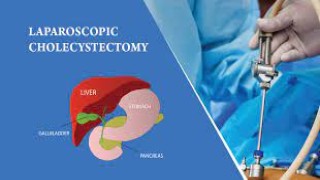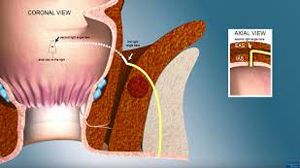Understanding Hernia: Causes and Minimally Invasive Treatment with Laparoscopy
Add to
Share
1,313 views
Report
2 years ago
Description
A hernia occurs when an organ or tissue pushes through a weak spot in the surrounding muscle or connective tissue. Common types of hernias include inguinal, femoral, umbilical, and hiatal hernias. Hernias can be caused by a variety of factors, including heavy lifting, persistent coughing, and obesity. While traditional open surgery used to be the standard treatment for hernias, laparoscopic surgery is now a minimally invasive option that has gained popularity in recent years. This approach involves making small incisions and using a laparoscope (a thin, lighted tube with a camera) to guide small surgical instruments to repair the hernia. Laparoscopic hernia repair is associated with less pain, shorter hospital stays, and quicker recovery times compared to open surgery. The use of mesh to reinforce the weakened area can also reduce the risk of hernia recurrence. This topic explores the causes and symptoms of hernias, as well as the minimally invasive treatment options available with laparoscopy. It aims to provide a better understanding of this common condition and the various treatment options available to patients. Hernia is a common medical condition that occurs when an organ or tissue protrudes through a weak spot or opening in the muscle wall. It can occur in various parts of the body, such as the groin, abdomen, and diaphragm. Symptoms of hernia include pain, swelling, and a bulge or lump in the affected area. While there are different types of hernias, laparoscopic surgery is a minimally invasive treatment option that can effectively repair most types of hernias. Laparoscopic surgery involves making small incisions and inserting a thin tube with a camera and surgical instruments to repair the hernia. Compared to traditional open surgery, laparoscopic surgery offers many benefits, including faster recovery times, less postoperative pain, and reduced risk of complications. If you suspect that you have a hernia or have been diagnosed with one, it is important to consult with a qualified medical professional to discuss the appropriate treatment options. With the help of laparoscopic surgery, hernia repair can be done quickly, safely, and with minimal disruption to your daily life. Hernia is a common medical condition that occurs when an organ, such as the intestines, bulges through a weak spot or tear in the abdominal wall. The most common types of hernias are inguinal (groin), umbilical (belly button), and incisional (resulting from a previous surgical incision). The causes of hernia include factors such as age, gender, family history, obesity, and heavy lifting or straining. The symptoms of hernia vary depending on the location and severity of the bulge, but can include pain or discomfort, swelling, and a visible bulge in the affected area. While hernias can sometimes be managed with lifestyle changes, such as weight loss or avoiding heavy lifting, surgery may be required in some cases to repair the hernia and prevent complications. Laparoscopic hernia repair is a minimally invasive surgical technique that utilizes small incisions and a laparoscope, a thin tube with a camera and surgical tools, to repair the hernia. This technique offers several advantages over traditional open surgery, including less pain, shorter recovery time, and reduced risk of complications. If you suspect you have a hernia or have been diagnosed with a hernia, it is important to consult with a healthcare professional to determine the best course of treatment for your individual needs.
Similar Videos






